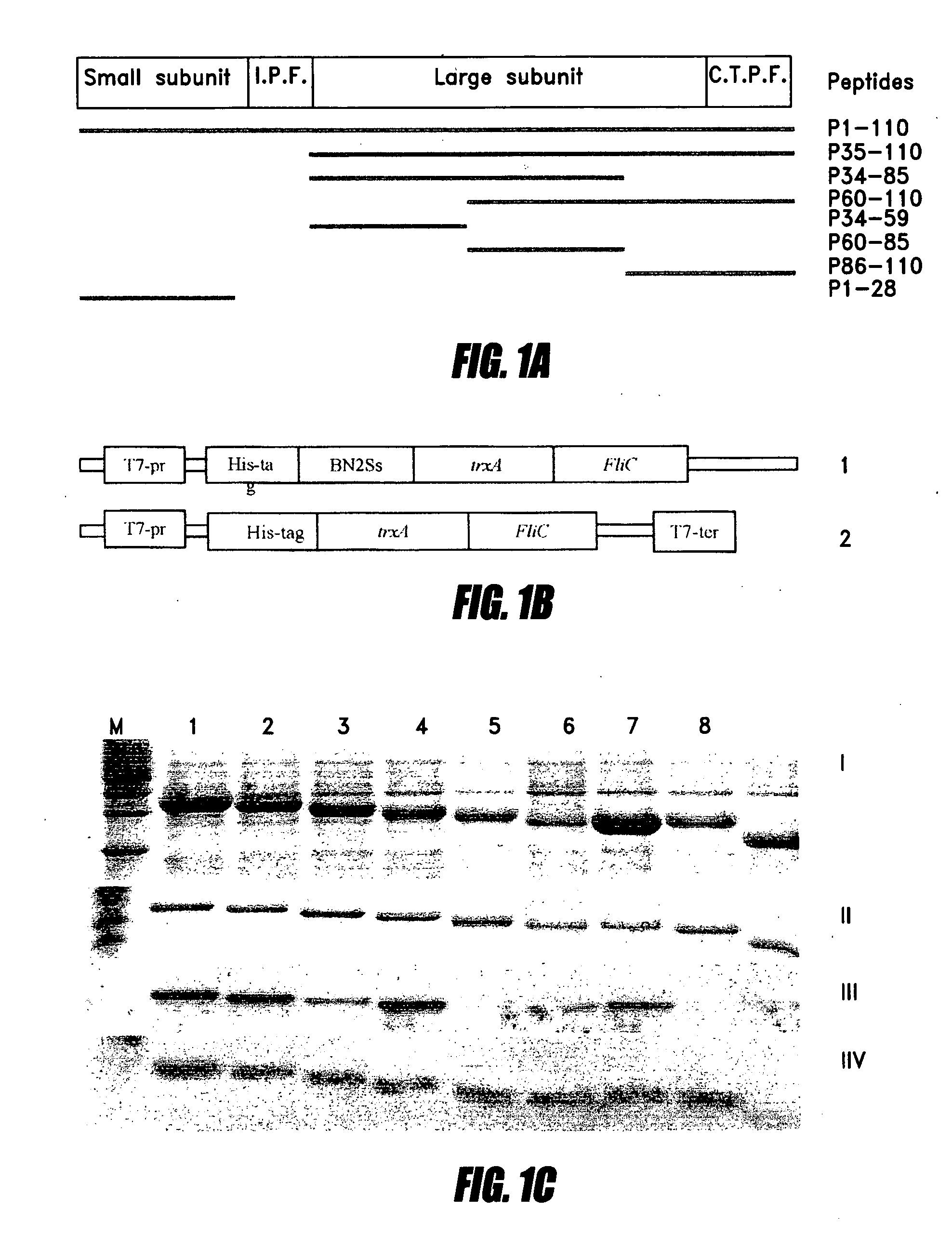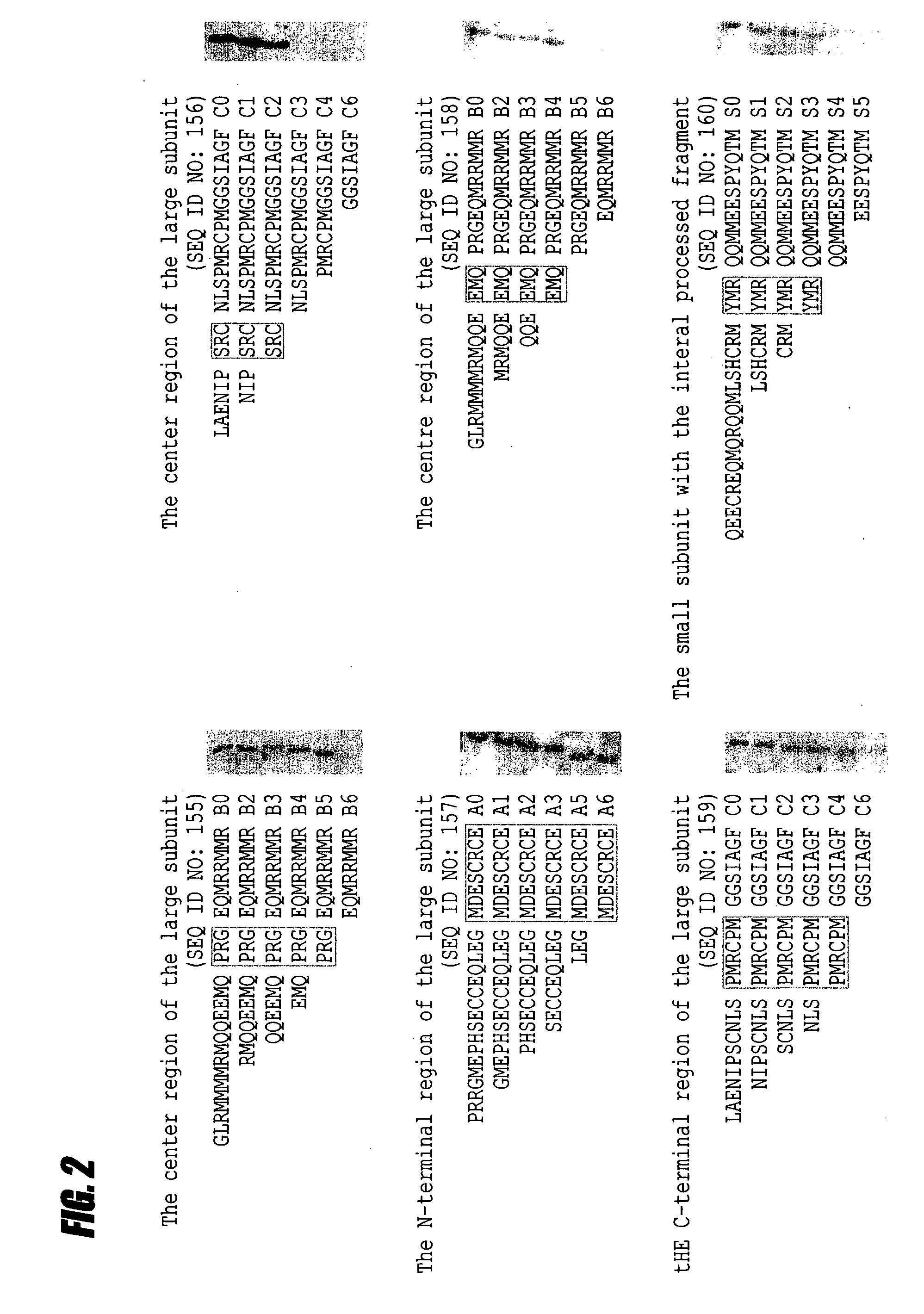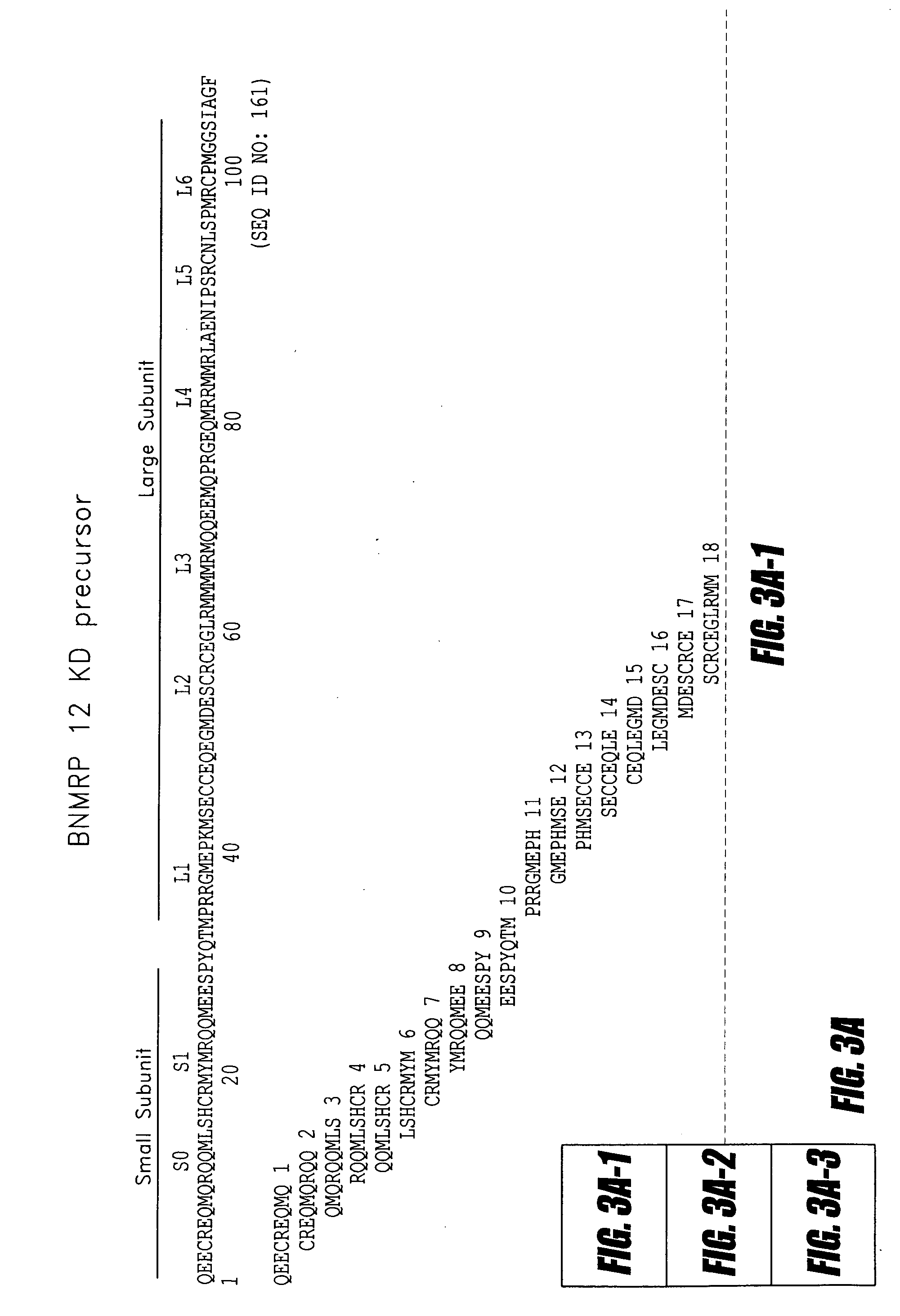Epitope identification and modification for reduced allergenic activity in proteins targeted for transgenic expression
a technology of transgenic expression and protein, applied in the direction of magnoliophyta medical ingredients, plant/algae/fungi/lichens ingredients, peptides, etc., can solve the problems of affecting the quality of protein quality enhancement of native bnmrp, and reducing or negative allergenic activity
- Summary
- Abstract
- Description
- Claims
- Application Information
AI Technical Summary
Benefits of technology
Problems solved by technology
Method used
Image
Examples
example 1
Construction of N-Terminal Deletions of BNMRP and Overlapping, Recombinant Peptides
Construction of Recombinant BNMRP Fragments
[0081] pHS-3 (Accession Number M17146, ARCO Plant Cell Research Institute, CA, USA), a plasmid containing a cDNA encoding the BNMRP (Altenbach S. B. et al., 1987), was used as a template for PCR cloning of recombinant BNMRP fragments. Gene-specific primers which were shown in Table 1, were designed with restriction enzyme sites for cloning into a pET-30a(+) expression vector (Novagen).
TABLE 1Primers Used for Fragmentation of BNMRPPosi-PrimersSequences (5′-3′)tions*BNLa5GCCAGATCTCCCAGGCGGGGAATG262-276BNLa3CGGACCTCGAGCTTCGCATCTGCAGCT325-339BNLb5GCCAGATCTGGCTTAAGGATGATG340-354BNLb3CGGACCTCGAGCCCTCATCATCCTTCG403-417BNLc5GCCAGATCTCTGGCCGAGAATATC418-432BNLc3CGGACCTCGAGCGAACCCGGCAATGGA478-492BNS5GCCAGATCACAGGAGGAGTGTCGC163-177BNS3CGGACCTCGAGCGCTCTCCTCCATCTG232-246Control 1-5CAGACCATGGCTCGAGGTCCGTGC—Control 1-3CCGGGAATTCAAACAGCCCTGCGTTATA—
*The position refers to...
example 2
Epitope Mapping of BNMRP
[0090] As shown schematically in FIG. 1, eight overlapping fragments covering the small and large subunits of the BNMRP were generated by PCR. To achieve efficient expression, the fragments were expressed in E. coli as fusion proteins with the E. coli thioredoxin (trxA) and flagellin (ηliC) of a pFlitrx vector. Expression levels were determined by Coomassie brilliant blue staining of proteins after separation by tricine SDS-PAGE. The induced proteins were purified and quantified (FIG. 1c). After separation by tricine SDS-PAGE, the fusion proteins were blotted onto nitrocellulose membrane and analyzed for binding with a rabbit anti-BNMRP serum and a pooled human serum from 9 patients allergic to Brazil nut. FIG. 1c showed clearly that IgG epitopes were mapped to the middle and C-terminal parts of the large subunit of BNMRP. No IgG reactivity was observed in the small subunit and the N-terminal part of the large subunit. Distribution of IgE epitopes on BNMRP s...
example 3
Identification of Key Amino Acids Critical to IgE Binding within Identified Epitopes
Modification of Epitopes by Alanine Substitution
[0101] Using the clones containing the native epitopes as templates, PCR was carried out using pƒu DNA polymerase by combination of the T7 promoter primer and a primer designed to introduce the mutation, as shown in Table 3. After digestion with Xba I, the PCR product was ligated with the Xba I / EcoR V backbone of the pET-32a(+) vector, forming the fusion protein containing the mutated epitope fused to the C-terminal of the trxA::His·tag.
[0102] The strong epitopes L6 and S1 and the two methionine-rich regions associated epitopes L3 and L4 were chosen to identify amino acids that are important for IgE binding in each of the epitopes. The native and mutated peptides were produced in E. coli as trxA fusion proteins. Expression was quantified by Coomassie brilliant blue staining of proteins after separation by tricine SDS-PAGE. The recombinant peptides w...
PUM
| Property | Measurement | Unit |
|---|---|---|
| Electrical conductance | aaaaa | aaaaa |
| Volume | aaaaa | aaaaa |
| Volume | aaaaa | aaaaa |
Abstract
Description
Claims
Application Information
 Login to View More
Login to View More - R&D
- Intellectual Property
- Life Sciences
- Materials
- Tech Scout
- Unparalleled Data Quality
- Higher Quality Content
- 60% Fewer Hallucinations
Browse by: Latest US Patents, China's latest patents, Technical Efficacy Thesaurus, Application Domain, Technology Topic, Popular Technical Reports.
© 2025 PatSnap. All rights reserved.Legal|Privacy policy|Modern Slavery Act Transparency Statement|Sitemap|About US| Contact US: help@patsnap.com



